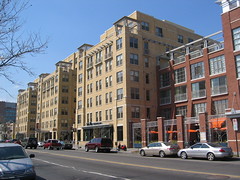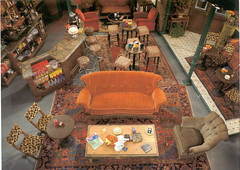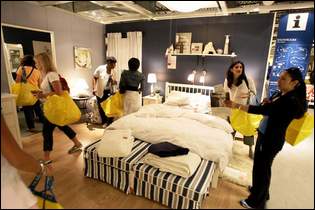Context insensitive design
 David Mayhood and the Mayhood Company are the leading sales agents for the condominium housing type in the Washington region.
David Mayhood and the Mayhood Company are the leading sales agents for the condominium housing type in the Washington region.We often talk about "context sensitive design" but rarely are we direct about most new building proposals. They tend to be "context insensitive."
Today there was a very productive meeting with a group of stakeholders (neighbors and others) with the architect for a project on H Street NE that I have written about in the past.
The architect, in his presentation, discussed how the Mayhood Company did a market study and they made recommendations to the developer that the area was attractive to younger people who prefer and are receptive to "an edginess."
The thing is, Mayhood Company is based in McLean Virginia, and most of their sales history is in the suburbs (even though they also sell a fair number of the units for developers in DC too).
So the bulk of their track record--sales in the suburbs--is irrelevant to the center city market specifically. As a couple people pointed out, the attractiveness of the city appeals to a certain segment of the market, one that is attracted to history and the architectural character of the extant buildings. (My words, not theirs.) That means the center city, in a milieu characterized by the presence of buildings from the late 19th and early 20th centuries, rather than an area built up over the last thirty years.
One person said that in DC, modern and edgy is really more a form of "neo retro." We didn't talk about the Ellington Building on U Street today, but that is an example. Same with 400 Massachusetts Avenue NW. Both were developed by companies rooted in DC. Not by developers attracted to DC because of the strength of the market, but without local connections.
 Ellington Building, U Street NW, DC. Photo by Steve Pinkus.
Ellington Building, U Street NW, DC. Photo by Steve Pinkus. 400 Massachusetts Avenue NW Photo by BeyondDC.
400 Massachusetts Avenue NW Photo by BeyondDC.In short, I aver that Mayhood's market analysis is qualitatively inaccurate because they don't fully understand the center city buyer, even though they sell units here (such as at 400 Massachusetts Ave. NW). In fact, if you look at their current list of projects on their website, they are representing 18 projects in Virginia and Maryland, but "only" 5 in DC proper.
 From the Mayhood Company website.
From the Mayhood Company website.I'd love to see their market analysis, and I wonder if they did focus groups where they compared the people attracted to DC vs. say the people interested in living up Rockville Pike in Maryland or on Wilson Blvd. in Virginia.
As usual, I pointed to tv shows like "Friends" and said that the actors were depicted in traditional places--apartments in old buildings, and the Central Perk coffee shop--not in modernist buildings made of glass...
 The set for Central Perk, from the tv show Friends.
The set for Central Perk, from the tv show Friends. Bedroom display at Ikea store. AP photo: Carlos Osorio.
Bedroom display at Ikea store. AP photo: Carlos Osorio.Index Keywords: housing



0 Comments:
Post a Comment
<< Home